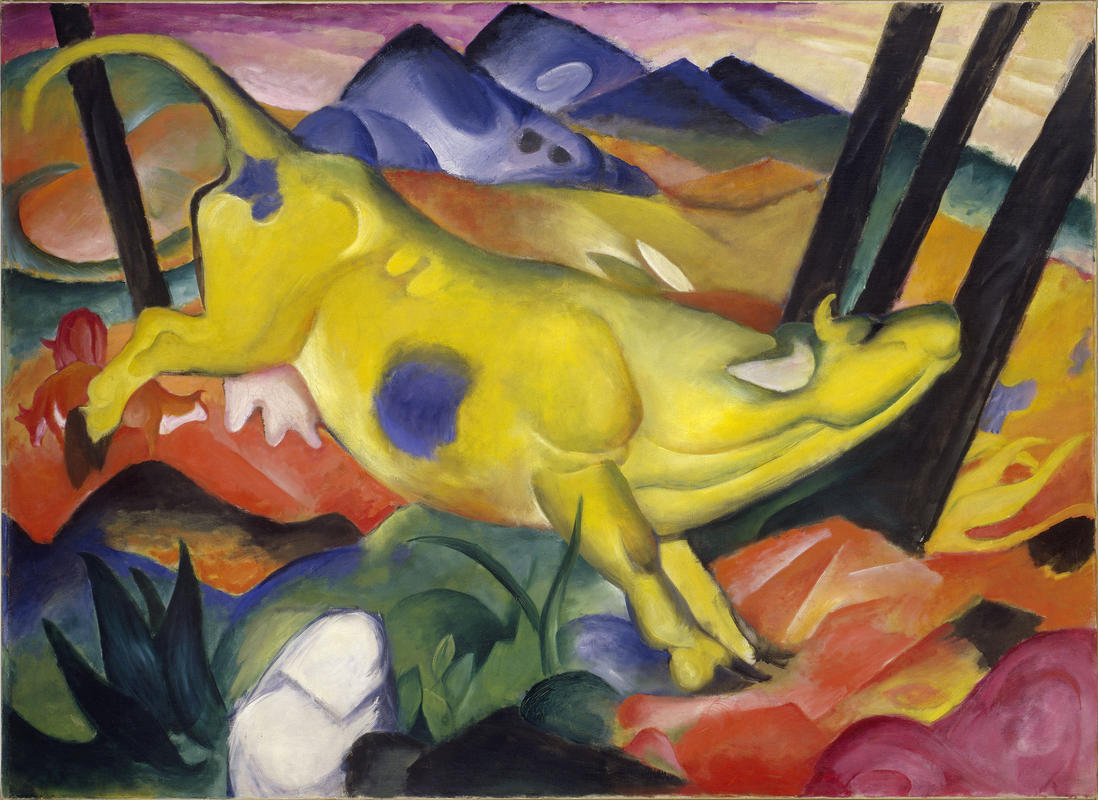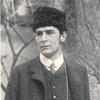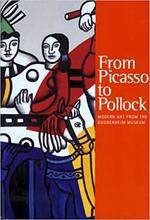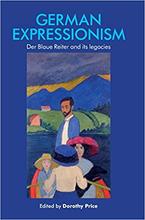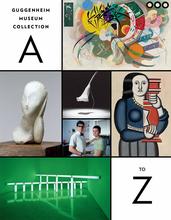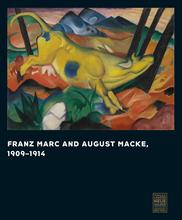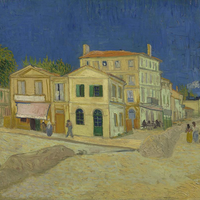More about Yellow Cow
- All
- Info
- Shop
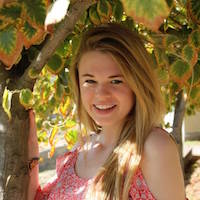
Contributor
The Yellow Cow is a picture of bovine bliss, shortly before the artist Franz Marc took a turn towards darker German Expressionism.
When discussing The Yellow Cow, it is appropriate to tell the story of the women in Marc’s life, because according to the color theory that Marc developed, yellow is the color of femininity, happiness, and sensuality. Marc’s main squeeze in his short lifetime was Maria Franck whom he met when he was twenty-five and she was twenty-eight. They didn’t become lovers at first meeting, but engaged in a friendship as fellow artists that turned romantic after Marc’s first attempt at marriage failed in 1907. Franck makes an appearance in Marc’s early works in 1906 in his painting Two Women on the Hillside, which shows Franck lounging on a grassy hill alongside another woman, Maria Schur, who was the first wife of Marc. Two Women on the Hillside was painted at the beginning of Marc’s career and is characterized by elements of his previous studies of the Impressionists.The painting points to the unity of humans and nature, a theme that Marc would more deeply explore in his theory of colors and his works like The Yellow Cow.
Maria Franck was a pioneering woman of her time, due to the fact that she decided to go against her parent’s wishes and live with Marc before they were married. She took a risk on the quirky artist type and gave up her family’s money to be with him without the security or legitimacy of marriage. A talented artist in her own right, young Franck dedicated herself to her art, as well as supporting the artistic endeavors of her beloved. The Yellow Cow was created as Franz Marc was in the first raptures of marital bliss; painted in the same year as his nuptials with Franck. In alignment with his color theory, the cow is painted a shade of cheery yellow on a background of blue mountains, representing the harmony between the man and the woman. The significance of blue as a male color (according to Marc) leads some to speculate that the blue spot on the cow reveals a secret wish of Marc; for his wife to give birth to a boy.
Marc’s color theory delegated the color yellow as well as Franck to a position of femininity and therefore excluded from the male spaces that dominated the art world back then. The group that Marc co-founded The Blue Rider was primarily a masculine affair, and Franck became little more than an assistant to her husband. Once married to Marc, instead of painting, she assumed wifely duties such as serving coffee and keeping up with the correspondence. After Marc’s untimely death in 1916 in the first World War, Franck had the job of authenticating Marc’s works, giving the works that she found in his studio her stamp and signature of authenticity and allowing his collection to reach heightened acclaim. It’s safe to say that without his wife’s help and dedication, Franz Marc wouldn’t be the German Expressionist we know and love today. You can’t help but wonder what artistic masterpieces Maria Franck would’ve cooked up if she enjoyed the same support and encouragement that her husband did…
Sources
- "Franz Marc Most Important Art | TheArtStory." The Art Story. Accessed June 30, 2018. https://www.theartstory.org/artist-marc-franz-artworks.htm.
- "Franz Marc's Life and Legacy." The Art Story. Accessed June 30, 2018. https://www.theartstory.org/artist-marc-franz-life-and-legacy.htm.
- Levine, Frederick S. "The Iconography of Franz Marcs Fate of the Animals." The Art Bulletin58, no. 2 (1976): 269. doi:10.2307/3049502.
- Smith, Kimberly A. "Maria Marc’s Letters." In Marianne Werefkin and the Women Artists in Her Circle, edited by Malycheva Tanja and Wünsche Isabel, 154-64. LEIDEN; BOSTON: Brill, 2017. http://www.jstor.org/stable/10.1163/j.ctt1w8h0q1.17.
- "The Yellow Cow by Marc Also Known as Gelbe Kuh." Moet & Chandon - Cremant Imperial by Mucha. Accessed June 30, 2018. http://www.aaronartprints.org/marc-theyellowcow.php.
Featured Content
Here is what Wikipedia says about Yellow Cow
Yellow Cow (German: Gelbe Kuh) is a painting by the German artist Franz Marc, dating to 1911. It is one of the artist's most well known works, and is one of several of his depictions of animals in Expressionist style. This work is oil on canvas and measures 140.5 x 189.2 centimeters. The central motif of the painting is a jumping cow, surrounded by a colorful, structured landscape. The painting is characterized by the contrast between the dynamic central motif and the calm background.
The painting is in the collection of the Solomon R. Guggenheim Foundation and has been shown at the Solomon R. Guggenheim Museum in New York.
Check out the full Wikipedia article about Yellow Cow

